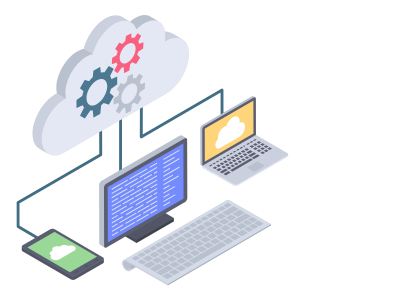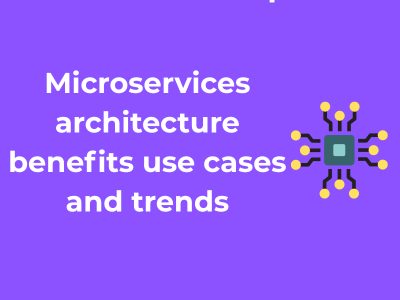Alright, let’s dive into the world of microservices! If you’ve ever heard someone mention “microservices” and nodded along while secretly wondering what on earth they were talking about, don’t worry—you’re not alone. Let’s break it down step by step in plain, accessible terms so everyone can feel like an expert.
What Are Microservices?
Microservices architecture is a way of designing software systems where applications are built as a collection of smaller, independent services. Each of these services focuses on a specific functionality or part of the overall application, and they communicate with each other using well-defined APIs.
Imagine a big, complicated app like an e-commerce platform. Instead of building it as one monolithic and unwieldy design, microservices break it up into chunks like catalog management, inventory tracking, payment processing, and so on. Each part can operate as its own mini-app while still working together.
Why the Hype Around Microservices?
You might be asking, “Why not just build the whole thing as one unit?” Great question! While the monolithic structure can work for smaller projects, it can be a real headache as applications grow larger and more complex. Here’s what makes microservices a popular choice:
- Flexibility: Teams can develop, deploy, and manage each service independently. This means faster rollouts and updates.
- Scalability: Adding more resources to one specific part of the application—like boosting server power for payment processing—is much easier in a microservices setup.
- Resilience: If one service fails (e.g., inventory tracking goes down), the rest of the system can keep running without a complete app meltdown.
How Do Microservices Communicate?
Picture each microservice as its own neighborhood in a big city. They all need to communicate and work together to keep the city functioning smoothly, right? The key here is using APIs (Application Programming Interfaces). APIs act like roads connecting neighborhoods, enabling smooth data flow between the smaller services without one “speaking over” the other.
For example, when you order something online, the ordering service makes a request to the inventory service to check stock availability, then chats with the payment service to process your card. All this happens seamlessly because of the clear and distinct communication paths enabled by APIs!
What Makes Microservices Different From Traditional Architectures?
Traditionally, software was built using a monolithic architecture—meaning the entire application was packaged and deployed as a single, inseparable unit. While this sounds simple, it brings some serious limitations:
- Making even the smallest change could require rebuilding and redeploying the entire app.
- As the app grows, debugging and maintenance become increasingly difficult.
- Scaling specific parts without overhauling everything is almost impossible.
In contrast, microservices offer a decentralized, modular approach. Each piece operates independently, making continuous updates, scaling, and troubleshooting much smoother.
Breaking Down the Core Advantages of Microservices

So, you’re curious about the benefits of microservices, right? Buckle up, because this architectural style isn’t just a trendy buzzword—it’s a game-changer for how businesses design, build, and scale their applications. Let’s dive into the key advantages and explore why microservices have become such a powerful choice in software development.
1. Enhanced Scalability
One of the most celebrated perks of microservices is scalability. With a monolithic application, scaling often means scaling the entire application—even if only a small function of it is under heavy load. That’s not efficient. But with microservices, each service can be scaled independently based on demand! For instance, if the payment-processing service of an e-commerce website sees a spike during a weekend sale, only that service can be scaled up, leaving the rest untouched. Pretty neat, right?
2. Faster Development and Deployment
Microservices let teams work on individual parts of an application without stepping on each other’s toes. This decentralized approach empowers smaller, specialized teams to develop, test, and deploy their services independently. Want to roll out a feature for just one part of your app? No problem. With microservices, faster iterations and deployments are the name of the game. It’s like speeding down the highway while others are stuck in traffic!
3. Improved Fault Isolation
Here’s the thing—nothing is perfect, and software is no exception. Things can fail, but with microservices, one failing component doesn’t have to drag the entire application down. For example, if the user authentication service crashes, the rest of the app (like product browsing or checkout) can keep humming along. This isolated fault tolerance minimizes downtime and enhances the overall resilience of your application.
4. Technological Flexibility
Imagine the freedom to work with the tools and technologies that suit each part of your application best. With microservices, teams can mix and match programming languages, frameworks, and databases rather than being boxed into a one-size-fits-all approach. Want to use Python for a machine learning module but prefer Node.js for a real-time chat feature? Go for it! Microservices embrace what works best for each job.
5. Easier Maintenance and Debugging
Maintenance can be a headache with bulky, sprawling monolithic apps. But with microservices, each service is smaller, modular, and easier to debug. If you encounter an issue, isolating and resolving it becomes much simpler. Plus, making updates or tweaks is less risky—no more worrying about breaking an entire application just because you patched a single bug. Phew!
6. Enabling Continuous Delivery
Microservices play incredibly well with DevOps methodologies. Continuous delivery (CD) tools can integrate seamlessly into their architecture, enabling automated testing, deployment pipelines, and faster feedback loops. This ensures that updates roll out quickly and consistently, which keeps your app… well, continuously improving.
7. Encourages Innovation and Agility
Modern markets demand innovative and flexible products. Microservices allow businesses to experiment, take risks, and adapt quickly to changing customer needs. By breaking projects into smaller, manageable chunks, teams gain the agility to pivot quickly when necessary—because who doesn’t love staying ahead of the game?
Microservices in Action: Real-World Applications Across Industries

Microservices are transforming how organizations build, deploy, and scale their systems. But what makes them so groundbreaking? Let’s take a closer look at how industries are adopting microservices to supercharge their services and stay ahead in today’s rapidly evolving digital landscape. Spoiler alert: the real-world applications are pretty exciting!
1. E-commerce: Enhancing Customer Experiences
If you’ve ever shopped online, chances are microservices helped make the experience smooth and personalized. Companies like Amazon and eBay leverage microservices to create modular systems where every component—such as search functions, payment gateways, or recommendation engines—works independently yet seamlessly together. **This independence ensures faster updates, smoother operations during peak traffic, and tailored shopping experiences.** For instance:
- Recommendation engines use separate microservice deployments to deliver product suggestions based on your browsing history in real-time.
- Checkout processes handle payment and inventory separately, ensuring the system remains stable even if one service faces an issue.
2. Media and Entertainment: Powering Streaming Platforms
Platforms like Netflix didn’t become household names by accident! Their robust backend, powered by microservices, allows them to deliver uninterrupted streaming to millions of users worldwide. Here’s how:
- Scalability: Each user profile is powered by a small, independent service, enabling personalized recommendations, separate preferences, and watchlists.
- Fault-tolerance: Even if one service fails (say, the review system), the rest of the platform works just fine due to the isolated nature of microservices.
- Localized delivery: Regional microservices can tailor the content library, language preferences, and playback optimizations for specific geographies.
By breaking their monolithic infrastructure into microservices, Netflix ensures reliability and agility while keeping millions entertained daily.
3. Banking and FinTech: Driving Secure Transactions
When it comes to money, there’s no room for error. Traditional banks and innovative fintech startups alike rely on microservices to modernize legacy systems while meeting heightened security and compliance requirements. Here’s what microservices bring to the table:
- Fraud detection engines can analyze real-time transactional data, flagging suspicious activity without disrupting regular operations.
- Payment gateways, currency conversion, and account management work as independent services, making compliance with regulations like GDPR and PCI DSS easier and more effective.
- Services can be updated or patched without downtime—because who wants their banking app to crash during a transaction?
4. Healthcare: Streamlining Data and Care Delivery
In an industry where lives are at stake, technological innovation must ensure both efficiency and safety. Think about how modern hospitals manage patient data, health records, and appointment scheduling. Microservices play a pivotal role here by enabling:
- Seamless sharing of patient data between departments without concern for system-wide failures.
- EHR (Electronic Health Record) systems to be efficiently updated, ensuring doctors see accurate information in real-time.
- Innovative telemedicine services—the video calling, prescription management, and payment portals often run on separate microservices.
This approach improves reliability while empowering clinicians to focus on patient care instead of battling slow or obsolete systems.
5. Logistics and Transportation: Keeping the World Moving
From delivery apps to airlines, the transportation sector is riding high on the microservices wave. Companies like Uber and FedEx have reimagined user convenience by using microservices to manage critical operations:
- Real-time tracking and mapping tools run as individual services that rapidly process geolocation data to help users track packages or vehicles.
- Notification systems send you timely updates without interfering with other backend services, such as billing.
- Routing algorithms optimize delivery or travel times, allowing companies to save costs and improve service quality simultaneously.
Common Challenges and Practical Solutions with Microservices
So, you’re exploring microservices or already dipping your toes into them – that’s awesome! Microservices can absolutely transform how you build and scale applications. But, fair warning: it’s not all smooth sailing. Like any architectural approach, microservices come with their own set of challenges. Don’t worry, though! There are practical solutions to keep these hurdles from becoming headaches. Let’s dive in and tackle the most common challenges together.
1. Increased Complexity
When you split an application into multiple smaller services, you’re essentially trading a monolith’s simplicity for modularity. Sounds like a fair trade, right? But let’s get real – managing interconnected services isn’t always easy. From maintaining service boundaries to maintaining communication between services, the complexity can feel overwhelming.
Solution: First, embrace automation tools and frameworks like Kubernetes for managing containers or service meshes like Istio to handle inter-service communication. Second, create clear API contracts for how services interact, standardizing those touchpoints. Documentation is your new best friend – make sure every service is well-documented to avoid chaos.
2. Data Management Issues
Unlike a monolith with one centralized database, microservices may each have their own data store, which means ensuring consistency across databases can become tricky. Ever heard of the term “eventual consistency”? It’s something you’ll encounter frequently here.
Solution: Adopt patterns like event-driven architecture or sagas for maintaining data consistency across services. Tools like Apache Kafka can be game-changers for enabling reliable messaging between services. And don’t forget to thoroughly design your data models to reduce unnecessary overlap or duplication of data.
3. Network Latency and Failures
In a microservices setup, services constantly communicate over the network. This increases the risk of latency issues or network-related failures, especially as the number of services grows.
Solution: Build resilience into your services by implementing strategies like circuit breakers or retry mechanisms. Libraries like Netflix Hystrix (now succeeded by Resilience4j) can help manage failures gracefully. Also, monitor performance actively with tools like Prometheus to identify and address bottlenecks before they become serious issues.
4. Deployment and Versioning Woes
Rolling out updates for one service without disrupting others can be like juggling flaming torches. Coordinating deployments across multiple independent services (each potentially at a different version) adds complexity.
Solution: Enter CI/CD pipelines (Continuous Integration/Continuous Deployment)! Automate your deployments using tools like Jenkins or GitLab CI/CD to streamline updates. For versioning, ensure backward compatibility in APIs when rolling out updates – versioning your endpoints (e.g., /api/v1/) is a smart approach that keeps things clean.
5. Security Gaps
With so many services talking to each other, the attack surface increases. Ensuring that all communication is secure and authenticated is non-negotiable.
Solution: Protect inter-service communication using encryption (e.g., TLS) and implement strong authentication and authorization mechanisms. Adopting standards like OAuth for secured APIs and using tools like HashiCorp Vault for managing secrets can strengthen your defenses.
6. Skill Gaps in Teams
Switching to microservices often requires your team to adopt new tools, frameworks, and even new ways of thinking. If the team isn’t equipped or confident, productivity and morale may take a hit.
Solution: Invest in team training and knowledge-sharing! Bring in external consultants for workshops or utilize platforms like Udemy or Pluralsight for learning resources. Encourage your team to start small – maybe begin by transitioning one piece of your application to microservices first, then scale up as they gain confidence.
The Role of Containers and APIs in Microservices Success
If microservices were a superhero squad, containers and APIs would definitely be their trusty sidekicks. These two elements are absolutely pivotal in ensuring the smooth execution and scalability of microservices—and let’s be honest, they make the whole process a lot cooler too. So, let’s dive into how they work and why they matter so much.
Containers: The Packing Experts of Microservices
Imagine you’re moving to a new house, and every item is neatly packed into labeled boxes, making unpacking a breeze. That’s what containers do for microservices. They package software with everything it needs to run—code, runtime, libraries, etc.—into lightweight, portable units. Popular tools like Docker help create and manage these containers, making deployment and scaling almost effortless.
But why is this important? Let’s break it down:
- Consistency Across Environments: Containers ensure that your microservices work exactly the same way in development, testing, and production. No more “but it worked on my machine!” issues.
- Scalability: Need more processing power? Simply replicate the containerized service as needed. It’s like multiplying your workforce in seconds.
- Better Resource Efficiency: Containers are lightweight and share the host operating system’s kernel, which means lower overhead compared to traditional virtual machines.
It’s no exaggeration to say that containers make the agile and flexible nature of microservices a reality.
APIs: The Communication Champions of Microservices
If microservices are individual team players, APIs (Application Programming Interfaces) act as their translators, helping them communicate seamlessly. Since microservices are designed to function independently, APIs provide a standardized way for these services to interact with one another, regardless of what language or platform they use.
Here’s why APIs are the unsung heroes of microservices:
- Interconnected Ecosystems: APIs enable services to share data, send requests, and work together as a unified whole. Without them, cross-service communication would be chaotic.
- Flexibility for Developers: APIs allow developers to use the best tools for the job. One service can run on Python, another in Go, as long as the APIs are in place to sync them up.
- Fostering Innovation: APIs can open doors to third-party integrations, allowing businesses to expand functionality and provide better user experiences without reinventing the wheel.
For example, think of how easily a payment gateway service like Stripe can integrate into an e-commerce platform. That’s the power of a well-designed API!
Bringing It All Together
Here’s the magic: containers and APIs work together as a dynamic duo. Containers provide the portability and scalability that microservices need, while APIs act as the glue holding these independent services together. Together, they help businesses create robust, flexible, and efficient systems that are tailored for modern-day demands.
So, if you’re diving into the world of microservices, make sure you prioritize mastering containers and crafting well-designed APIs. Tools like Kubernetes (for container orchestration) and industry standards like REST or GraphQL APIs are the staples that can make or break your journey. Ready to get started? The possibilities are endless!
Emerging Trends Driving the Evolution of Microservices
Ah, microservices—what a fascinating journey they’ve taken over the years! They’ve gone from being a buzzword to becoming a fundamental approach in modern software development. Curious about what’s driving their evolution today and what the future might hold? Let’s dive into some exciting trends shaping the world of microservices!
1. Serverless Architectures Gaining Momentum
The rise of serverless computing, with platforms like AWS Lambda, Azure Functions, and Google Cloud Functions, has been a game-changer for microservices. Why? Because serverless allows developers to focus entirely on writing code without worrying about managing infrastructure. For microservices, this means reduced costs and radically faster deployment times.
Paired with microservices, serverless architectures enable applications to scale effortlessly. Imagine automatically handling thousands of requests during peak traffic without a hitch—sounds like a dream, right?
2. Increased Adoption of AI-Driven Automation
Artificial intelligence (AI) and machine learning aren’t just for self-driving cars or quirky chatbots. They are making their mark on microservices management too! AI-powered automation tools are helping developers monitor, test, and even heal microservices ecosystems. Things like anomaly detection or predictive scaling? All possible thanks to AI.
This means fewer sleepless nights for DevOps teams and applications that fix themselves before issues spiral out of control. Pretty amazing, huh?
3. Event-Driven Designed Systems
Event-driven architecture is rapidly gaining popularity among microservices enthusiasts. Think of it like this: instead of microservices sitting idle, always waiting for instructions, they respond to specific events.
For example, when a customer places an order, the system triggers an event that notifies relevant microservices like inventory, payment, and shipping teams. This approach allows apps to be ultra-responsive, highly scalable, and way easier to maintain. Win-win!
4. Service Mesh Adoption for Complex Microservices
As microservices systems grow in complexity, managing communication between services can quickly become overwhelming. Enter service meshes. These nifty tools (think Istio or Linkerd) handle things like load balancing, security, and monitoring traffic between microservices.
If you’re running dozens or even hundreds of microservices, adopting a service mesh ensures developers can focus on coding without struggling to maintain clear service-to-service communication. It’s like having a super traffic controller for your architecture!
5. Heightened Focus on Observability
Observability is all the rage, and for a good reason. With so many microservices at play, keeping an eye on system health becomes crucial. Trends show an increased usage of observability tools like logging, tracing, and metrics platforms (Elastic Stack, Prometheus, or Jaeger, anyone?).
These tools help identify bottlenecks, pinpoint failures, and improve overall performance. They give developers a bird’s-eye view of their architecture—a must-have when troubleshooting complex issues.
6. Focus on Security: Zero-Trust Models
With cybercrime on the rise, security in microservices is more critical than ever. Enter the Zero-Trust Security Model. In layman’s terms, this approach means no component, person, or device—inside or outside the system—is trusted by default. Every communication and request is verified and authenticated.
For microservices, zero-trust minimizes vulnerabilities, creating a robust shield over your architecture. A proactive security mindset? Count us in!
How To Decide If Microservices Suit Your Business Needs
Deciding whether microservices are a good fit for your business is like picking the right tool for a DIY project – you don’t want a sledgehammer when a screwdriver would do. Dive in with me as we unpack this decision step by step, so you can make confident and well-informed choices!
1. Assess Your Business Goals
Let’s start with the big picture. Microservices aren’t just a flashy new tech trend; they’re a solution to specific challenges. Ask yourself:
- Do you need to scale certain parts of your application independently? For example, if your e-commerce platform struggles with high traffic during sales season, a microservices architecture can allow you to scale just the payment or inventory system.
- Are you aiming for faster feature delivery? Microservices enable smaller, focused teams to work on specific features, accelerating development and updates.
- Is flexibility critical? If you’re dealing with a diverse tech stack or foresee future integrations with new technologies, microservices are great for adaptability.
If these align with your goals, microservices might just be your secret weapon!
2. Analyze Your Current Architecture
You wouldn’t build a new house without checking the foundation of the old one, right? Similarly, take a hard look at your current monolithic application. Consider these points:
- Are you experiencing bottlenecks? If a single issue brings your entire application to its knees, microservices can offer relief by isolating responsibilities into smaller, autonomous units.
- Is it too complex to maintain? A tangled monolithic architecture is a headache to debug and upgrade. Microservices simplify this by breaking it down into easier-to-manage services.
But remember, complexity doesn’t magically vanish – it just gets distributed. Be prepared for a shift in challenges!
3. Evaluate Your Team and Resources
Let’s be honest here – microservices aren’t a magic wand. They require technical expertise, proper tooling, and, most importantly, a team equipped to handle the demands. A few questions to guide your assessment:
- Does your team have experience with DevOps practices? Continuous integration and deployment (CI/CD), containerization, and API management are essential parts of a microservices setup.
- Do you have the budget for the transition? Migration projects can be time-consuming and costly. Factor in training, infrastructure, and tools.
If your team is ready to embrace these challenges, microservices become a lot more viable.
4. Consider Future Growth
Are you building for the business you have today, or the one you envision five years from now? Microservices are future-proof by design, making them an intelligent choice for businesses planning on rapid growth, global reach, or frequent innovation.
5. Start Small and Test the Waters
When in doubt, don’t leap in all at once. Begin with a pilot project or a non-critical part of your system. Migrating a single service to microservices can highlight potential pitfalls and confirm the benefits before a full-scale rollout.











